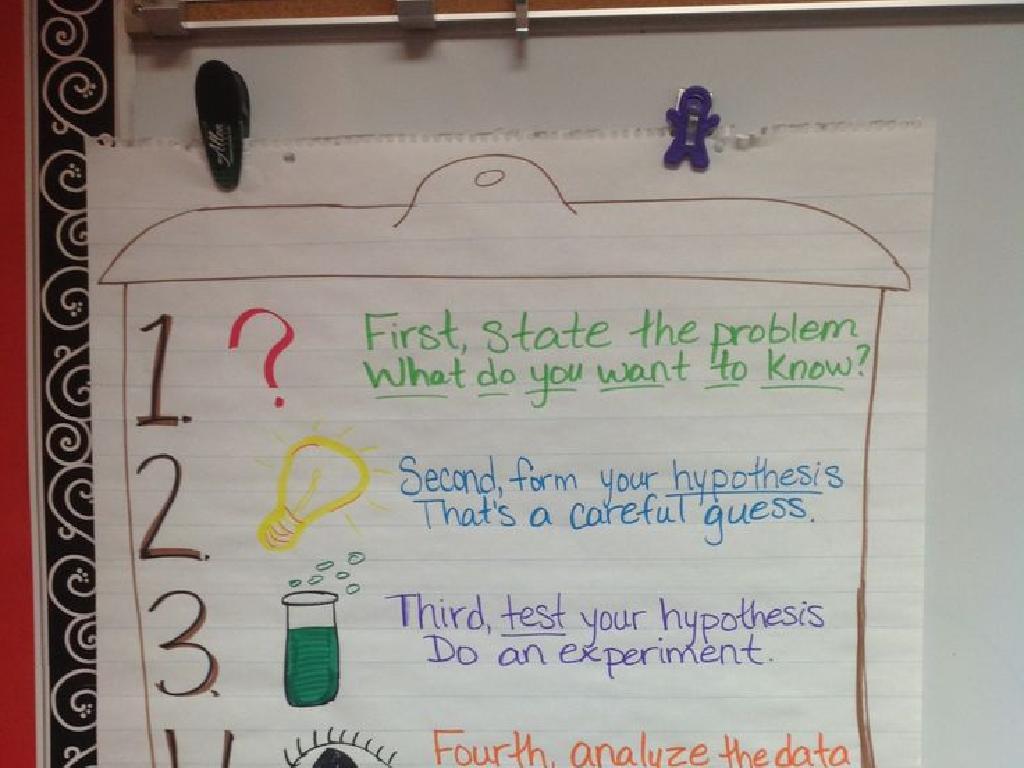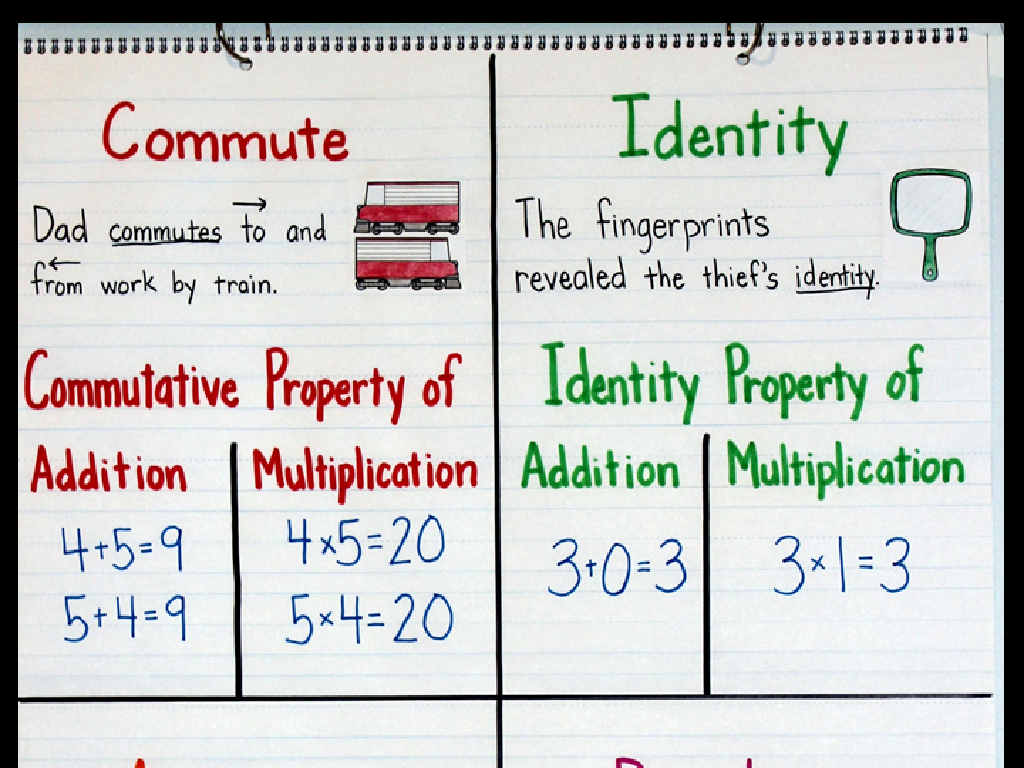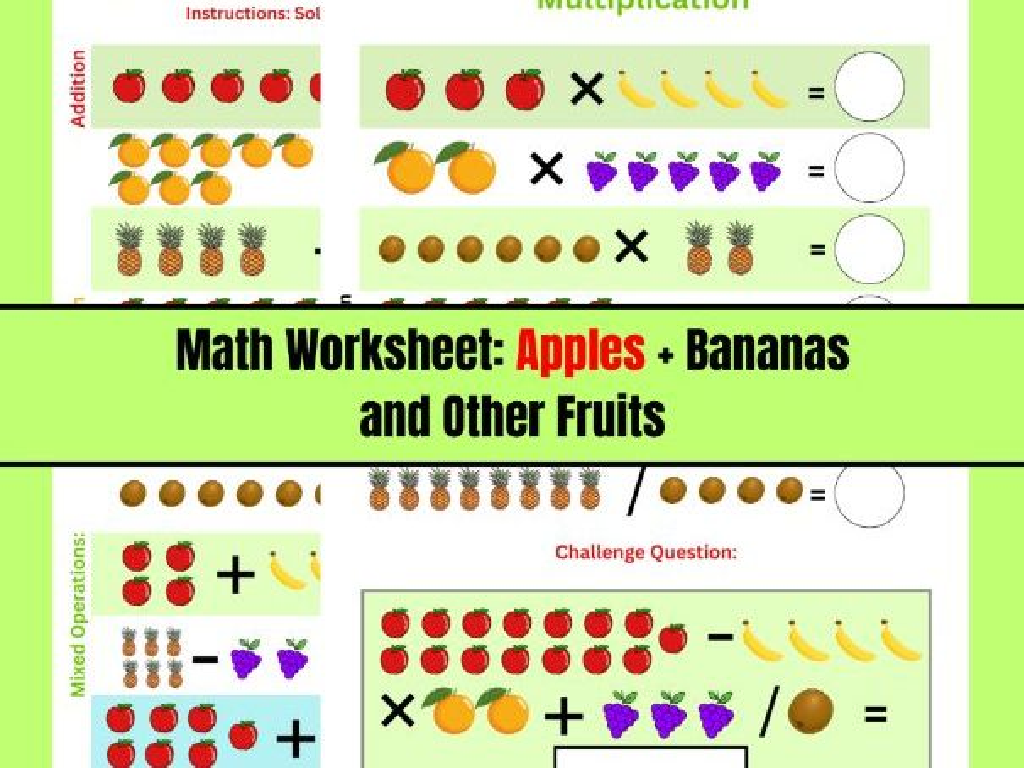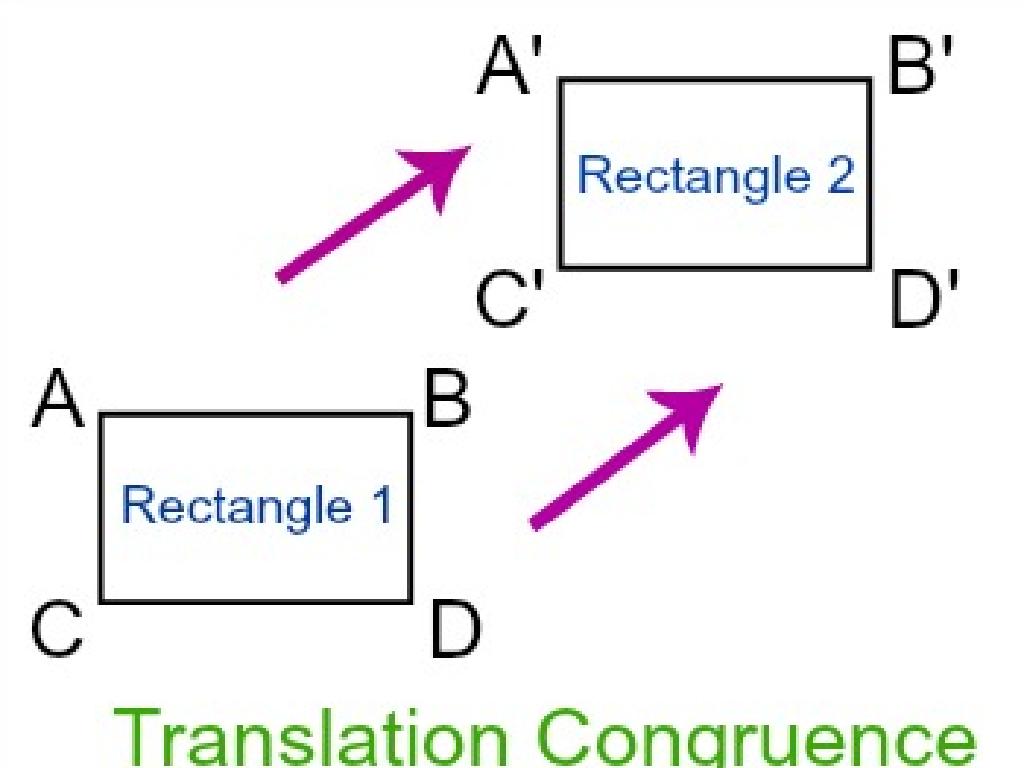Compare Numbers Using Multiplication
Subject: Math
Grade: Fourth grade
Topic: Multiplication
Please LOG IN to download the presentation. Access is available to registered users only.
View More Content
Welcome to Multiplication!
– Greetings, young mathematicians!
– Quick review: What is multiplication?
– Multiplication is repeated addition, e.g., 4×3 is like adding 4 three times
– Today’s goal: Compare numbers using multiplication
– We’ll use multiplication to see which numbers are bigger or smaller
– Get ready to multiply and compare!
|
Begin the class with a warm welcome to set a positive tone for the lesson. Quickly review the concept of multiplication as repeated addition to refresh the students’ memory. Introduce the objective of today’s lesson, which is to learn how to compare numbers by using multiplication. This will help students understand the relative size of numbers when they are multiplied. Prepare interactive examples and activities where students will practice multiplying pairs of numbers and then determine which product is larger or smaller. This skill is fundamental in understanding the properties of multiplication and its applications in real-world scenarios.
Understanding Multiplication
– Multiplication as repeated addition
– If you have 4 groups of 3 apples, that’s 3+3+3+3 or 4 times 3
– Examples of simple multiplication
– 2 x 5 is the same as adding 2 five times: 2+2+2+2+2
– Multiplication in daily life
– Use it to calculate total items, like pencils in packs or slices in pizzas
– Practice multiplication problems
|
Begin the lesson by recapping multiplication as a faster way to do repeated addition. Show visual examples with small numbers, such as groups of items, to solidify this concept. Discuss how multiplication is used in everyday scenarios, such as shopping or dividing items equally, to highlight its importance. Conclude with practice problems to apply what they’ve learned. Encourage students to think of their own examples of multiplication in their daily lives to make the concept more relatable and memorable.
Comparing Numbers with Multiplication
– Learn comparison symbols
– Symbols: > (greater), 3, 7 < 9, 4 = 4
– Practice comparing numbers
|
This slide introduces students to the basic symbols used for comparing numbers: greater than (>), less than (<), and equal to (=). Students will learn how to determine the relationship between two numbers using multiplication as a tool for comparison. For example, to compare 2×3 and 3×2, they multiply to find both products are 6, so 2×3 = 3×2. Start with simple examples that do not involve multiplication to ensure students are comfortable with the comparison symbols. Then, move on to using multiplication to compare larger numbers. Encourage students to practice with various examples and to explain their reasoning for each comparison.
Multiplication as Comparison
– Multiplication shows size comparison
– Multiplying can tell us which number is larger or smaller, like 3 x 4 vs. 3 x 5
– Comparing two products with examples
– Example: Which is more, 4 packs of 5 stickers or 5 packs of 4 stickers?
– Real-life scenarios for comparison
– Comparing apples in baskets or books in stacks can show us multiplication in action
– Understanding greater and lesser products
|
This slide introduces the concept of using multiplication to compare numbers, emphasizing that multiplication is not just for finding totals but also for comparison. Start by explaining that when we multiply, we can see which number is bigger or smaller by looking at the products. Provide clear examples, such as comparing the total number of stickers in different packs. Relate this to real-life situations like comparing quantities of items, which helps students understand the practical application of multiplication in everyday life. Ensure students grasp that a greater product means a larger quantity, and a lesser product means a smaller quantity. Encourage them to think of other scenarios where they might need to compare quantities using multiplication.
Let’s Practice Multiplication!
– Solve practice problems together
– Explain your problem-solving process
– How did you decide which numbers to multiply?
– Discuss and correct any mistakes
– It’s okay to make mistakes, let’s learn from them!
– Guidance to understand multiplication
– Tips: Remember multiplication is repeated addition
|
This slide is designed for an interactive class activity focused on practicing multiplication problems. Start by presenting a few multiplication problems for the class to solve. Encourage students to volunteer to explain their thinking as they solve the problems, fostering a collaborative learning environment. As students work through the problems, listen to their explanations and correct any misconceptions that arise. Provide guidance and support to help them understand the concept of multiplication as repeated addition. Offer different strategies for solving problems, such as using arrays or skip counting. The goal is to build confidence and proficiency in comparing numbers using multiplication.
Group Activity: Comparing Numbers
– Divide into small groups
– Receive multiplication problems
– Each group gets unique sets of problems
– Discuss and order numbers
– Use multiplication to compare and arrange
– Present findings to class
– Share your group’s order from smallest to largest
|
This group activity is designed to encourage collaboration and application of multiplication skills to compare numbers. Divide the class into small groups, ensuring a mix of abilities in each group to promote peer learning. Provide each group with a set of multiplication problems that they will solve and then use to compare the resulting products. The task is to arrange the numbers from smallest to largest, fostering discussion and critical thinking. After the activity, each group will present their findings, explaining their reasoning process. This will not only reinforce their understanding of multiplication but also enhance their communication skills. Possible variations of the activity could include using different sets of numbers, incorporating word problems, or challenging students to create their own problems for others to solve.
Class Discussion: Comparing Numbers
– Groups share their multiplication findings
– Discuss various comparison strategies
– Did some use repeated addition? Others might have drawn arrays.
– Interactive concept reinforcement
– Use examples from group findings to highlight the concept.
– Encourage questions and answers
|
This slide is meant to facilitate a class discussion where students will engage with each other by sharing their methods of comparing numbers through multiplication. Allow each group to present their findings and encourage the class to discuss the different strategies used, such as repeated addition, drawing arrays, or using multiplication facts. Reinforce the concept by interacting with the students, asking guiding questions, and providing feedback. This will help solidify their understanding of multiplication as a means of comparing numbers. Prepare to address common misconceptions and provide clear explanations to ensure all students grasp the concept.
Individual Practice: Comparing Numbers
– Work on comparison problems
– Use multiplication for answers
– Multiply to see which number is bigger or smaller
– Check work for accuracy
– Review your answers carefully
– Share your findings
|
This slide is for an individual practice activity where students will apply their understanding of multiplication to compare numbers. Provide each student with a set of problems that require them to determine which of two numbers is greater by using multiplication. Encourage them to think critically about the relationship between the numbers. Remind them to double-check their work to ensure accuracy. After completing the activity, students should be prepared to discuss their methods and results. For the teacher: Prepare diverse problem sets to cater to different skill levels within the class. Consider offering hints for students who may struggle, such as using simpler numbers to start with or providing a multiplication chart for reference.
Review and Reflect: Multiplication Comparisons
– Recap today’s key multiplication points
– Share your multiplication discoveries
– What new insights about comparing numbers did you gain?
– Address any lingering questions
– Are there any concepts that are still unclear?
– Reflect on multiplication applications
|
This slide aims to consolidate the learning from the lesson on comparing numbers using multiplication. Begin by summarizing the main points, such as how to multiply numbers and compare the results. Encourage students to actively participate by sharing their own understanding and insights gained from the lesson. This can include sharing strategies they found useful or interesting multiplication facts they learned. Address any questions that students may still have to ensure a solid understanding of the concepts taught. Finally, guide students to reflect on how multiplication is used in everyday life to compare quantities, reinforcing the practical applications of what they’ve learned.
Class Activity: Multiplication Comparison Game
– Introduction to the comparison game
– Explanation of game rules
– Each student gets a set of problems to solve as quickly as possible.
– Objectives of the multiplication game
– To understand multiplication concepts and compare numbers effectively.
– Engage in the game play
– Ensure fair play and participation from all students.
|
This interactive game is designed to help students practice and reinforce their understanding of comparing numbers using multiplication. The game will involve students racing to solve problems that require them to multiply and then compare the results. The objective is to provide a fun and competitive environment where students can apply multiplication concepts and develop speed and accuracy in comparing numbers. As a teacher, you should ensure that the rules are clearly explained and that each student is actively participating. Consider preparing different sets of problems to cater to varying skill levels within the class. Possible activities could include pairing students to challenge each other, creating a tournament bracket, or having timed rounds to add excitement. The key is to maintain engagement and provide support where needed.






